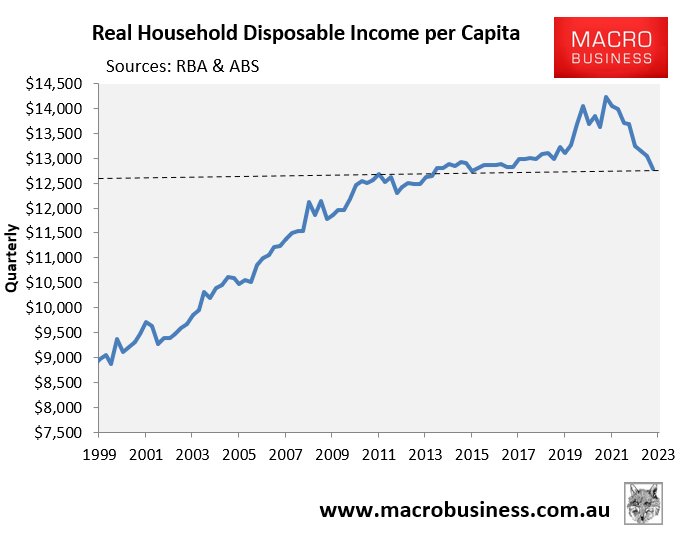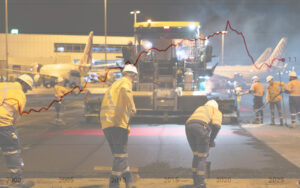Australians on middle incomes are earning less than they were before the Covid pandemic, new research shows.
An analysis from the Australian National University’s Centre for Social Research and Methods found that while the bottom 40% of income earners and the top 20% are better off than in 2019, the middle 40% have suffered a decline in disposable income, The Australian reported.
Those households have seen their average annual after-tax incomes fall by $1700 over the past four years, at the same time as interest rates went from 0.75% to 4.35% and inflation went from 1.8% to 7.8%, while high immigration kept wages low.
For upper-middle households the equivalent fall was $1520.
Modelling from the ANU analysts predicts Australians will enjoy an increase in real wages in 2024, bumping the second-highest bracket 1% above 2019 levels while the middle income bracket still lags behind.
ANU associate professor Ben Phillips said lower income earners were better off than pre-Covid due to boosts to welfare payments and the pegging of payments to inflation.
However, economist Leith van Onselen from Macrobusiness said the ANU findings are contradicted by figures from Finder which show renters struggling more than mortgage holders., and points out that lower income earners are disproportionately affected by rapid increases in rents.

A Macrobusiness graph shows that real household disposable income per capita is now at 2011 levels and that publication is now predicting another “lost decade” for Australian living standards.
Wages are now at 2010 levels, falling 7.3% from June 2020 to September 2023. Homelessness increased 50% over the same period, dwelling completions flattened, the rental vacancy rate collapsed to 1% while in 2023 unit rental growth was 10.2% and house rents grew by 7.5%.
Inflation has been driven by the record number of immigrants allowed in by the Albanese Labor government, with the 500,000 new arrivals also putting downwards pressure on wages and increasing demand for housing.


























